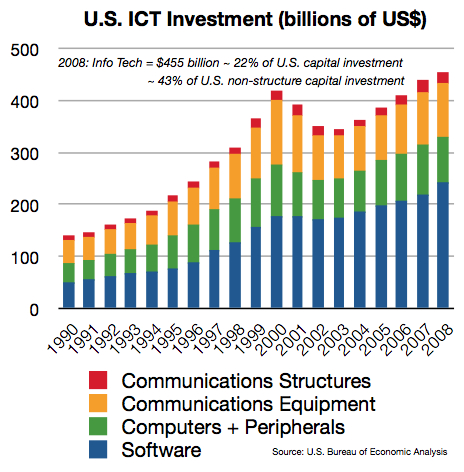Wyoming wireless operator Brett Glass has 20 questions for the FCC on Net Neutrality. Some examples:
1. I operate a public Internet kiosk which, to protect its security and integrity, has no way for the user to insert or connect storage devices. The FCC’s policy statement says that a provider of Internet service must allow users to run applications of their choice, which presumably includes uploading and downloading. Will I be penalized if I do not allow file uploads and downloads on that machine?
4. I operate a wireless hotspot in my coffeehouse. I block P2P traffic to prevent one user from ruining the experience for my other customers. Do the FCC rules say that I must stop doing this?
6. I am a cellular carrier who offers Internet services to users of cell phones. Due to spectrum limitations, multimedia streaming by more than a few users would consume all of the bandwidth we have available not only for data but also for voice calls. May we restrict these protocols to avoid running out of bandwidth and to avoid disruption to telephone calls (some of which may be E911 calls or other urgent traffic)?
7. I am a wireless ISP operating on unlicensed spectrum. Because the bands are crowded and spectrum is scarce, I must limit each user’s bandwidth and duty cycle. Rather than imposing hard limits or overage charges, I would like to set an implicit limit by prohibiting P2P, with full disclosure that I am doing so. Is this permitted under the FCC’s rules?
14. I am an ISP that accelerates users’ Web browsing by rerouting requests for Web pages to a Web cache (a device which speeds up Web browsing, conceived by the same people who developed the World Wide Web) and then to special Internet connections which are asymmetrical (that is, they have more downstream bandwidth than upstream bandwidth). The result is faster and more economical Web browsing for our users. Will the FCC say that our network “discriminates” by handling Web traffic in this special way to improve users’ experience?
15. We are an ISP that improves the quality of VoIP by prioritizing VoIP packets and sending them through a different Internet connection than other traffic. This technique prevents users from experiencing problems with their telephone conversations and ensures that emergency calls will get through. Is this a violation of the FCC’s rules?
18. We’re an ISP that serves several large law offices as well as other customers. We are thinking of renting a direct “fast pipe” to a legal research database to shorten the attorneys’ response times when they search the database. Would accelerating just this traffic for the benefit of these customers be considered “discrimination?”
19. We’re a wireless ISP. Most of our customers are connected to us using “point-to-multipoint” radios; that is, the customers’ connection share a single antenna at our end. However, some high volume customers ask to buy dedicated point-to-point connections to get better performance. Do these connections, which are engineered by virtually all wireless ISPs for high bandwidth customers, run afoul of the FCC’s rules against “discrimination?”


